Epsom salt is popularly promoted as a garden benefit. Epsom salt can increase the yield and growth of numerous vegetables due to its nutrient richness, making it common among organic gardeners. This article will discuss which vegetable plants are especially responsive to Epsom salt, explaining why it works and how you can use it practically. You’ll have a good grasp of why you should be adding Epsom salt in your gardening agenda at the conclusion of this piece. More so, its contribution towards improved health and productivity of your plants will not escape your attention.
Understanding Epsom Salt: A Vital Supplement for Plant Growth
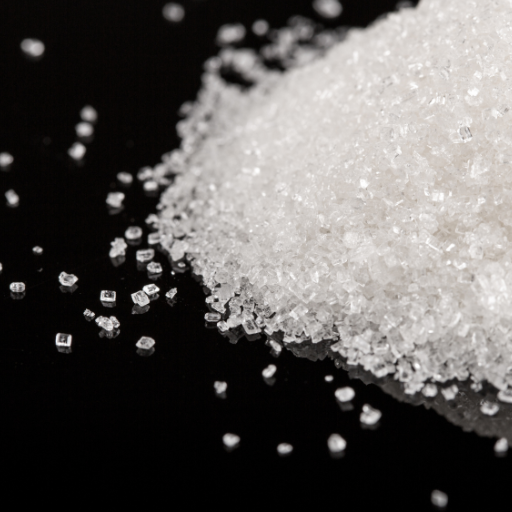
Epsom salt gives plants magnesium and sulfur, two of the principal nutrients for vigorous growth. The magnesium is instrumental in photosynthesis, allowing plants to absorb sunlight more efficiently while sulfur forms amino acids and enzymes. Vegetables such as tomatoes, peppers and leaf vegetables like spinach receive immense benefits from Epsom salts as they are able to address magnesium deficiencies which lead to poor fruiting and yellow leaves. To use Epsom salt, dissolve it in water (usually a tablespoon per gallon) and put into soil or foliage for healthier and more fruitful plants.
Composition of Epsom Salt
The chemical name of Epsom salt is known as magnesium sulfate (MgSO₄·7H₂O). It consists of the elements magnesium, sulfur, and oxygen. Epsom salts have one atom of magnesium, one atom of sulfur with four atoms of oxygen which has seven molecules of water attached to them. Here is a breakdown:
- Magnesium (Mg): It is crucial for plant energy processes especially photosynthesis whereby chlorophyll molecule contains it as central element that converts light energy into chemical energy from sunlight. Magnesium deficiency symptoms are interveinal chlorosis i.e., yellowing between veins.
- Sulfur (S): Vital for synthesizing amino acids, enzymes and vitamins required by plants in their growth stages.Sulfur helps in synthesis of proteins thus improving disease resistance of plants. Sulfur deficiency may manifest itself through general yellowing on young leaves and stunted growth.
- Oxygen (O): Oxygen participates in various biochemical processes within cells but does not come directly from Epsom salts; rather, it makes up the compound’s stable structure.
- Water of Hydration (7H₂O): Although the water molecules present in the compound do not directly benefit the plant, they stabilize its crystal structure.
These technical specifications confirm the effectiveness of using Epsom salt in gardening. Application methods include dissolving water-soluble Epsom salt in water for direct supply to potted plants and soils deficient in magnesium and sulfur, which can be absorbed quickly by the plant’s roots and leaves.
The Role of Magnesium in Plant Nutrition
Magnesium has a special role in plant nutrition because it is a central atom of chlorophyll molecule which helps plants capture energy from sunlight during photosynthesis. Without enough magnesium, plants cannot convert sunlight into chemical energy effectively hence their growth suffers greatly. Interveinal chlorosis often accompanies this deficiency whereby the tissues between veins on leaves turn yellow while major veins green. Similarly, magnesium is involved in activating numerous enzymes necessary for plant growth and development including protein synthesis, as well as energy transfer reactions.
- Photosynthesis: The chlorophyll molecule will only work if magnesium is in its core.
- Enzyme Activation: It acts as an enzyme cofactor enabling biochemical reactions like DNA synthesis or energy metabolism to occur.
- Deficiency Symptoms: Interveinal chlorosis, poor leaf development, general plant health deterioration
Plant Mechanisms for Epsom Salt Uptake
Both the root and the leaf of plants take up Epsom salt. The water dissolves magnesium sulfate in the soil when it is applied there, and then it is absorbed by plants. Such uptake occurs through plant root cells via passive diffusion across concentration gradients. Also, foliar feeding by spraying Epsom salts will make leaves absorb these ions of magnesium and sulphate directly through their stomata and cuticles. This way allows for faster nutrient supply since the soil can be bypassed completely so that benefits can be felt immediately in case of an acute nutrient scarcity.
Vegetable Plants That Thrive with Epsom Salt
Tomatoes are one of the plants that greatly benefit from the use of Epsom salt. The magnesium in Epsom salt aids in building strong cell walls, enhancing fruit quality and reducing chances of blossom end rot. Similarly, peppers exhibit increased growth and higher yields when treated with Epsom salt due to magnesium’s ability to promote chlorophyll production and photosynthesis. In addition, leafy greens like spinach and kale flourish under applications of Epsom salts by developing more colorful foliage and growing much better as a result of increased access to essential nutrients.
Boosting Fruit Production and Quality for Tomatoes
Epsom salt helps improve tomato fruit production and quality through Magnesium nutrient supply especially when it comes to the plant. Magnesium is an important component in chlorophyll which is required for photosynthesis. Making sure that there is sufficient magnesium in tomatoes, by using Epsom salt, enhances energy production while transforming important substances inside the plant. Also, Epsom salt contributes towards optimal soil pH necessary for proper nutrient absorption across the board. Therefore, this results into stronger stems, healthier leaves with less diseases together with high yield tomatoes having excellent taste. Additionally, magnesium resultant from Epsom salts can help solve common problems such as yellowing leaves and blossom end rot hence improving tomato plants’ overall health and productivity.
Enhancing Yield And Disease Resistance For Peppers
The application of Epsom salt on peppers offers great benefits since they contain large amounts of Magnesium which is critical for their growth and development process. Photosynthesis relies heavily on this element because it forms part of chlorophyll; thus, playing a key role in this process. The peppers’ photosynthesis rate increase after using Epsom salts translates into faster growth rates as well as more fruits being formed by these plants later on. Moreover, strengthening the cell walls also adds resistance against other diseases including blossom-end-rot among others this is through the magnesium. As a result, this is why there are healthier plants that have dark leaves, strong stems and more productive tomatoes which have a nice taste due to added Epsom salt magnesium plus that can also prevent blossom end rot and yellowing of the leaves.
Improving Nutrient Absorption And Texture For Leafy Greens
The application of Epsom salt to spinach, lettuce, and kale can significantly improve nutrient absorption and texture of these leafy greens. Magnesium which is an essential component in Epsom salts enhances photosynthetic efficiency leading to vigorous growth as well as thick green foliage for leafy vegetables. Additionally, it facilitates production of enzymes that help facilitate uptake of nutrients so as to ensure an appropriate nutrient balance for normal development of the plants. As a result, leafy greens treated with Epsom salts typically taste better (fresher) due to their crisper textures often having better mouth feel because their fiber contents are still intact thus being one source of healthy diet.
Best Practices for Using Epsom Salt in Vegetable Gardens
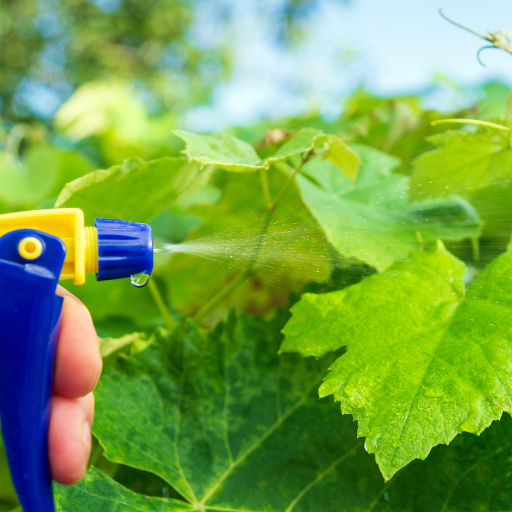
For the best results of using Epsom salt in vegetable gardens, it is important to use the right quantity and application procedure. Most plants such as peppers and leafy vegetables can be mixed with a general suggestion of one table spoon of Epsom salt added to a gallon of water applied once per month during growing seasons. In addition, around 1 teaspoonful of Epsom salts should be sprinkled directly around the base of the plants for every foot in height they are. For example, when applying magnesium through Epsom salts it is crucial to water the plant properly after use for proper absorption. It is advisable not to over-apply Epsom salts because excess magnesium causes nutrient imbalance in soil. Test your soil magnesium levels before you apply.
Application Methods: Foliar Spray vs. Soil Drench
Foliar Spray
- Method: Dissolve one tablespoonful of Epsom salt in a gallon container filled with water, then pour the solution into a spray bottle and gently spray all leaves.
- Frequency: The foliar spray can be done once every month during growth or when there is a lack of magnesium, such as yellowing leaves or poor growth, which would indicate that some nutrients deficiency must have occurred.
- Advantages: Foliar sprays are an excellent means of supplying magnesia directly into crops instantly. This technique helps to redress immediate nutritional insufficiencies, resulting in rapid absorption.
Soil Drench
- Method: Mixtures containing one tablespoonful plus one gallon can be poured at the base towards plants.
- Frequency: The soil drench solution may vary according to the needs of individual plants indicated by previous soil tests or be applied once monthly throughout the growing season.
- Advantages: Soil-drenching makes magnesium available at the root zone, where it can be gradually absorbed by plants. This process facilitates slow nutrient uptake and, hence, sustained growth enhancement.
Frequency and Timing of Epsom Salt Application
- Monthly Application: Many garden experts advocate applying Epsom salt once per month during the growing season, which secures enough magnesium in the soil, thus maintaining steady growth.
- Plant-Specific Needs: Some plants require more frequent applications, such as tomatoes and pepper if they exhibit signs of magnesium deficiency. In this case, bi-weekly application after testing the soil is preferred to avoid over-supplementation.
- Early Morning or Late Evening: When applied late in the evening or early morning, Epsom salt solutions effectively absorb nutrients into a plant, reducing its vulnerability to leaf scorch. They also help reduce evaporation while ensuring that nutrients are available during active growth periods, which is typical for most plants.
Potential Risks and Precautions
Though Epsom salts have their benefits when used as fertilizers yet there are certain risks and precautions that one should observe while using it. Over applying it can lead to an imbalance of nutrients within a soil thereby causing more harm than good. Moreover, high magnesium levels interfere with calcium absorption leading to deficiencies manifested in problems like blossom end rot among tomato crops. Prior tests on soils should be done before using Epsom salts so as to ascertain whether nutrient profile has been balanced or not.
It is also necessary to think about the possibility of sulfate build-up since excessive sulfate levels can make soil acidic and kill good soil bacteria. The best approach to these problems involves sticking to recommended application rates and schedules. For example, it is common for farmers to use 1-2 tablespoons of Epsom salt in each gallon of water when spraying plants or irrigating them using soil drenches but they have to change this depending on the kind of crops they are growing.
Another point is that one should only apply Epsom salt solution when it cooler parts of the day so that it would prevent leaf scorching and maximize absorption. By storing Epsom salt in a cool dry place, its efficacy will be preserved thus further endorsing its safe and efficient use for gardening purposes.
The Science Behind Epsom Salt and Plant Health
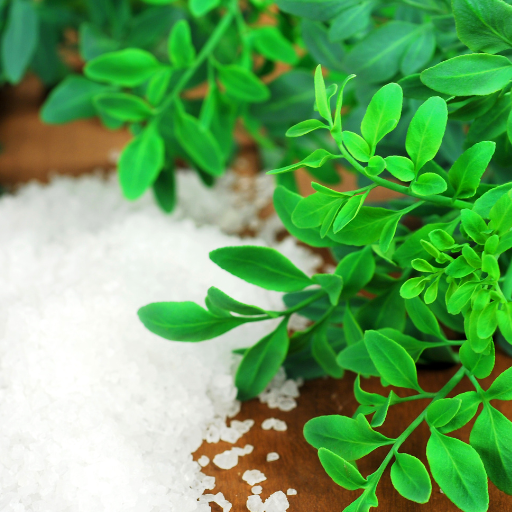
Magnesium sulfate, known chemically as Epsom salt, has an important impact on the health of plants. Chlorophyll molecule which is responsible for photosynthesis in plants contains magnesium at its core. The element also aids in the production of plant enzymes and proteins. The presence of certain vitamins and amino acids requires sulfur which is often ignored when discussing this element’s importance. Sulfur though less emphasized is useful in some amino acids and vitamins.
Applying Magnesium Sulfate
Application of magnesium sulfate can ameliorate magnesium deficiency disorders, which are manifested by intermittent chlorosis—yellowing of leaves between the veins while the veins remain green. Consequently, photosynthesis will be impaired, reducing growth rate. Moreover, sulphur in Epsom salt supports other functions, such as nitrogen fixation, resulting in robust plant development.
Magnesium ion is considered one of the main components in chlorophyll synthesis because it constitutes central atom to the chlorophyll structure. This means that light energy absorption during photosynthesis is dependent upon this mineral which is essential for all plants’ growth. Inadequate content of Mg makes it hard to synthesize chlorophyll hence showing symptoms such as interveinal chlorosis.” Improving chlorophyll synthesis through increasing available levels of Mg helps attain proper foliage condition and strong growth.
The best websites show that most plants require soil magnesium concentration ranging from 25-50 ppm (parts per million). Also, uptake ability of magnesium occurs mainly at pH levels close to 6.0-7.0 range. A soil test revealing low Mg level would recommend applying Epsom salt usually about 1-2 tablespoons per gallon mixed with foliar spray every two weeks for soils poor in nutrients.
Soil Sulfate Content
Sulfate plays vital roles in maintaining good soil fertility and sustaining healthy plants through several physiological processes within them. This helps synthesize key amino acids and enzymes. In addition, it plays a role in the development of protein and general metabolism within plants. Nitrogen fixation is one process required by legumes and some other species to enable such plants assimilate nitrogen from atmosphere for their growth.
The best ranges for most crops are between 10 – 30 ppm to maintain sufficient supply without causing toxicity. Similarly, sulfate availability is also dependent on the soil’s pH values where they should stay at about 6.0-7.5 for optimal uptake. Sulfate level determination can be done through soil testing which may recommend the use of elemental sulfur or sulfate-based fertilizers, among others, depending on the situation. For example, inhospitable soils will benefit from ammonium sulfate at a rate of 25-50 lbs per acre to supply both sulphur and nitrogen.
Adequate sulfate supply ensures strong vegetative growth, disease resistance, and enhanced crop yield and quality. Regularly checking soil levels and correcting them with the right intervention can help manage sulfate levels correctly.
Research Studies on Epsom Salt in Horticulture
Some studies have shown that certain crops can benefit from the use of Epsom salt in farming. Researchers suggest that several kinds of plants particularly those with low magnesium or sulfur levels can have some improved health and productivity when they are treated with Epsom salts made of magnesium sulfate. Furthermore, it results in chlorophyll production growth and higher photosynthetic efficiency as well as better nutrients absorption hence increased overall plant vigor. Tomato yields increased while peppers were found to be greener than normal foliage is a major example in this case that could serve to prove the point. Also, most gardeners sprinkle Epsom salt on their plants’ leaves to prevent the yellowing process and encourage vigorous growth. However, excessive amounts of it can cause imbalances in nutrient uptake among crops therefore being advised to follow specific guidelines on its application so as not to harm plant life.
Troubleshooting Common Issues with Epsom Salt
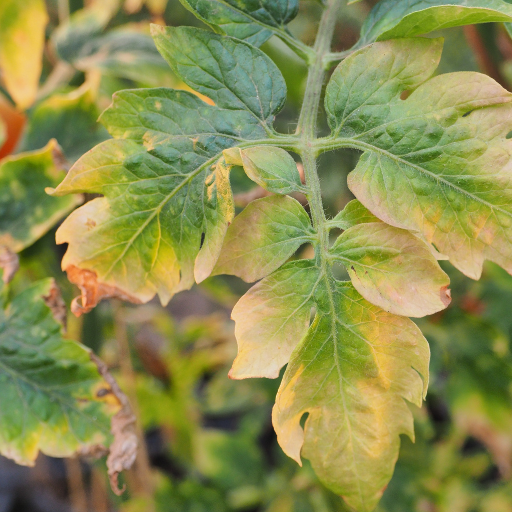
Over-applying Epsom salt in horticulture can result in high levels of magnesium which can interfere with the absorption of other essential nutrients such as calcium and potassium. Symptoms of over application include leaf scorching, increased pest and disease susceptibility as well as poor overall plant growth. In case of any problems ensure that you strictly follow dosage recommendations while your regular soil test will keep checking the nutrient status. Also, should plants show malnutrition signs, one could consider amending soils or using alternative fertilizers to restore a proper balance of nutrients. To mitigate adverse effects for specific crops, apply depending on observed plant response and environmental conditions.
Signs of Magnesium Deficiency
Several different symptoms manifest in plants affected by magnesium deficiency. One common symptom is interveinal chlorosis where the leaf veins remain green while the areas between them turn yellow. This often starts with older leaves since magnesium is a mobile nutrient that may be translocated to new growths. Other types have crinkled leaf edges and reddish or purple spots especially in tomato and pepper plants (Kasten Dumroese et al., 2008). A comprehensive approach to confirming magnesium deficiency involves soil testing where levels below 100 parts per million (ppm) indicate a need for supplementation (Longman, K.). For hydroponic systems, magnesium should be maintained at concentrations around 30-50 ppm (Dumontier et al., 2013). Prompt correction through suitable magnesium fertilizers or soil amendments can help rectify these deficiencies hence restoring sound health to plants.
Rectifying Over-application Effects
The correction of over-application calls for careful and methodical measures only. The first step towards correcting this problem is leaching out excess nutrients from soils. This can be done by thorough watering so as to wash off extra fertilizer from the area affected. Secondly, think about temporarily stopping any fertilizer application and observing how the plant responds within a couple of weeks. If over-application has caused nutrient imbalance, soil amendments such as organic matter or balanced fertilizers could help restore the equilibrium. In this case, soil with high salinity levels should be leached with fresh water until electrical conductivity (EC) readings drop below 4 millimhos per centimeter (mS/cm). When soil pH is significantly changed, it may be necessary to return pH to the desired range of 6.0-7.0 depending on specific crop needs (Lakitan et al., 2012). For hydroponic systems, it is important to regularly change the nutrient solution and maintain EC within 1.0-2.5 mS/cm which depends on plants’ tolerance levels.
Expert Tips for Maximizing Benefits of Epsom Salt
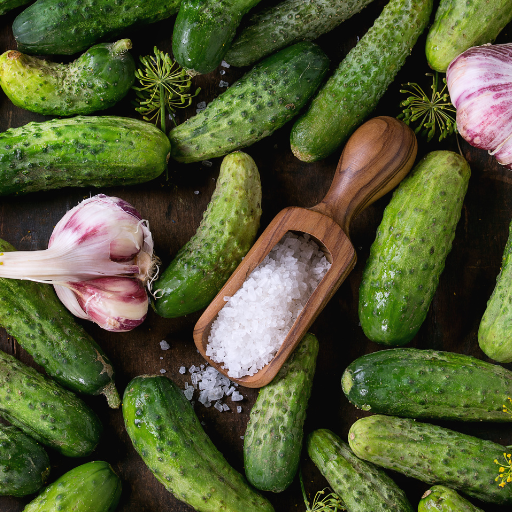
Analyze soil to determine the quantity of magnesium that needs adding when applying Epsom salt. In order to make certain that the plants have absorbed it properly, water has to be used as a solvent for Epsom salt. It is advisable to mingle one spoonful of Epsom salts per gallon of water and then directly subjecting this solution into the ground or spraying it on top of leaves. For most garden crops, monthly applications during crop growth would do well. You should observe yellowing leaves on your plants and use Epsom salt accordingly if in doubt.
Epsom salt can also be very effective for tomatoes, peppers, and roses due to its high chlorophyll content. This aids in increased blooming and rapid growth by enhancing their nutrient absorbency through the production of more chlorophyll molecules. The main factor is to avoid using too much fertilizer so as not to imbalance nutrients in the soil.
Combining Epsom Salt with Other Fertilizers
It is vital that combining Epsom salts with other fertilizers helps address complex nutritional needs hence promoting plant healthfulness. Therefore, blending these substances together must be guided by each specific requirement of your crops when integrating them. As an illustration, where NPK fertilizers are balanced well enough nitrogen (N), phosphorus (P) and potassium (K) wise but still lack magnesium (Mg), this deficiency can be eliminated by applying magnesium sulfate commonly known as Epsom salt.
- NPK Fertilizers: Use one tablespoonful per gallon of water every month after dissolving one tablespoonful per gallon of water along with NPK fertilizers. This ensures there is enough magnesium ions needed to make chlorophyll molecules responsible for photosynthesis and the absorption process.
- Organic Fertilizers: When using organic fertilizers like compost or manure, supplement them with Epsom salt to enhance magnesium levels. Around its base, add one teaspoon of Epsom salt for every foot of plant height to the side dressing.
- Foliar Feeding: To address the immediate needs of Mg deprived plants, dissolve 2 tablespoons in a gallon of water and use as a foliar spray every other week up to three times per growing season.
Always follow specific crop recommendations and adjust the application rates as needed when monitoring soil and plant conditions so as to avoid over-fertilization or nutrient imbalances.
Seasonal Adjustments for Epsom Salt Use
- Spring: Plants emerging from dormancy will be focused on growing quickly which requires additional nutrients. Thus, at the beginning of the growing period, mix one tablespoonful with a gallon of water for ground soaking. This should be done after four weeks intervals so that there can be promotion into strong roots and stems development.
- Summer: At this point in time, magnesium demand increases during the maximum vegetative growth stage. To ensure quick availability of an immediate nutrient supply important for photosynthesis and general plant healthiness, apply two tablespoons twice weekly via spraying. A spray can also continue being used on the soil with one spoonful per gallon applied during each four-week interval.
- Autumn: The frequency of applying Epsom salts should drop once growth starts slowing down till dormancy happens late autumn/fall-don’t know what you mean here but reduce it anyway otherwise it will not come out right given that winter is near. Every six weeks, treat your plant by adding 1 table spoon liquid Epsom salts into 1 gallon water e.g., which helps them acquire necessary minerals even with no excessive stimulation into senselessly wasting their energy in future cold seasons
- Winter: In winter, the magnesium needs of houseplants and those in greenhouses are consistent with a decline rate. Do not use more than one tablespoon of Epsom salt per gallon every two months. Unless there are specific deficiencies, outdoor plants do not normally require any Epsom salt supplements throughout this dormant period.
Case Studies: Examples of Successful Application of Epsom Salt in Vegetable Gardens
An experiment in Wisconsin showed that tomatoes treated with Epsom salt had larger and more plentiful fruits. The study involved spraying 1 tablespoon of Epsom salt on each foot of plant height twice a month resulting into reduced blossom-end rot which is a common sign of magnesium deficiency in tomatoes.
A similar trial conducted on pepper plants was conducted at California’s Central Valley. The plants were sprayed with 2 tablespoons of Epsom salts in water after every fortnight. This improvement in chlorophyll production and leaf pigmentation corresponds to increased photosynthesis rates, resulting in higher fruit production.
Lastly, a customer from Florida found success using Epsom Salt in his cucumber garden. A monthly soil soak using one tablespoon per gallon for water helped cucumbers to grow faster with less physiological disorders. Hence, this practical, anecdotal information supports scientific data to demonstrate how efficient Epsom salts can be when used amidst different vegetable gardening contexts.
Frequently Asked Questions (FAQs)
Q: What is Epsom salt and why is it used in gardening?
A: Epsom salt is a naturally occurring mineral compound of magnesium and sulfate. It is used in gardening because it can help plants develop better growth, bloom more, and fight off pests. Its magnesium content is especially beneficial for plants like tomatoes, peppers, and roses.
Q: How do I apply Epsom salt to plants?
A: There are various ways to use Epsom salt in the garden. You can mix Epsom salt with water, use it as a soil amendment, or apply it as a foliar spray. For a general solution, dissolve 1 tablespoon of Epsom salt in a gallon of water and apply it to the base of your plants once a month.
Q: Is Epsom salt good for tomato plants?
A: Yes, using Epsom salt for tomato plants can be beneficial. It can promote healthier growth and increase yields by helping the plants absorb essential nutrients like phosphorus and nitrogen. For best results, sprinkle 1 tablespoon of Epsom salt per foot of plant height around the base of the tomato plant every two weeks.
Q: How much Epsom salt should I use for my pepper plants?
A: For pepper plants, it’s recommended to use 1 tablespoon of Epsom salt per gallon of water. Apply this solution once a month throughout the growing season to supply your pepper plants with the necessary magnesium for optimal growth.
Q: Can Epsom salt be used on potted plants?
A: Yes, Epsom salt can be very beneficial for potted plants. Mix 1-2 tablespoons of Epsom salt in a gallon of water and use it to water your potted plants once a month to improve nutrient absorption and growth.
Q: Are there any plants that don’t benefit from Epsom salt?
A: Yes, some plants don’t like Epsom salt. It is generally not recommended to use Epsom salt on sage, parsley, and other leafy green plants as they seldom show a magnesium deficiency and excessive magnesium can harm them.
Q: How often should I apply Epsom salt to my garden soil?
A: It is generally recommended to apply Epsom salt to garden soil every four to six weeks. A good rule of thumb is to use 1 cup of Epsom salt per 100 square feet for larger garden areas. Mix the Epsom salt thoroughly into the soil to avoid burning the plant roots.
Q: Does Epsom salt help plants bloom more?
A: Yes, Epsom salt can help plants bloom more by providing magnesium, which is crucial for chlorophyll production and photosynthesis. Plants like roses, hibiscus, and azaleas can show significant improvements in blooming when Epsom salt is applied appropriately.
Q: Can I mix Epsom salt with other fertilizers?
A: Yes, you can mix Epsom salt with other fertilizers to enhance their effectiveness. The combination helps plants absorb nutrients more efficiently. However, be sure not to over-fertilize and always follow the recommended dosages for both products to avoid harming your plants.
Q: What are the signs of using too much Epsom salt for plants?
A: Signs of using too much Epsom salt for plants include yellowing leaves, stunted growth, and leaf drop. Excessive magnesium can interfere with the uptake of other important nutrients like calcium and potassium, causing nutrient imbalances.






